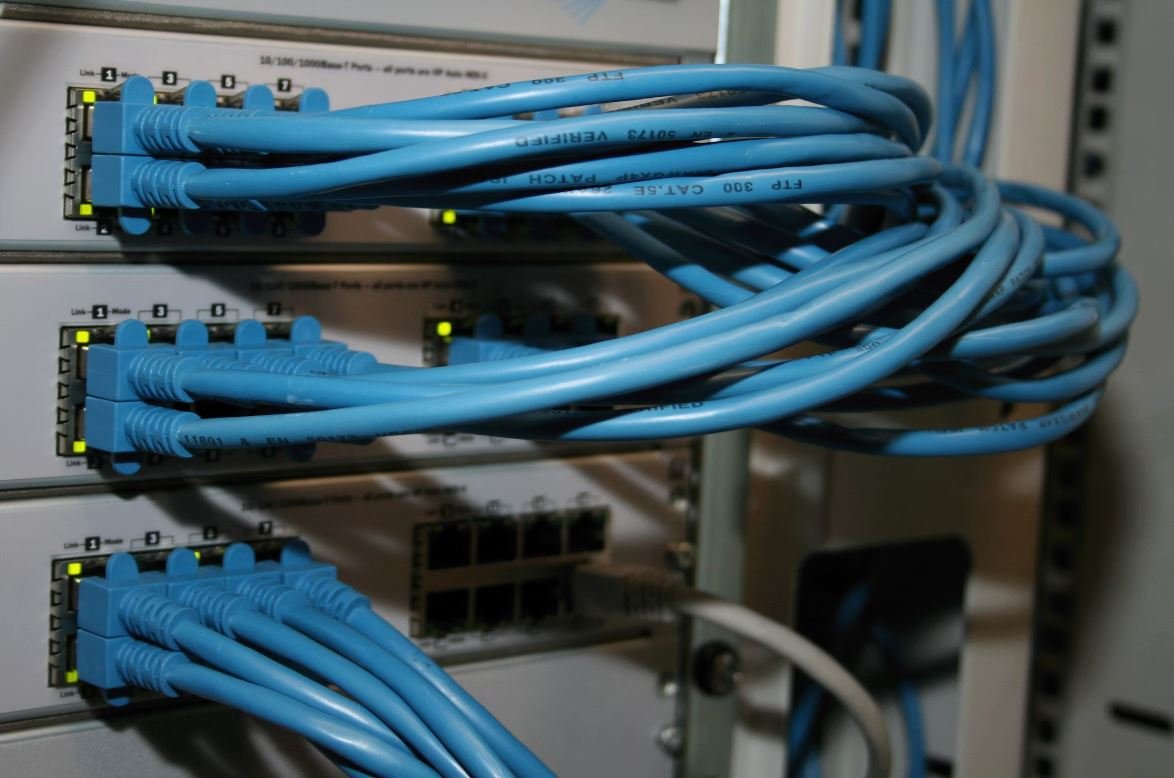Application of Matrices
Matrices, a fundamental concept in linear algebra, find wide applications in various fields of study. From computer science to physics, matrices are used to solve complex problems and model real-world scenarios. In this article, we will explore the application of matrices in different domains and their significance in problem-solving.
Key Takeaways
- Matrices are versatile mathematical structures widely used in various fields.
- They provide an efficient way to solve complex problems.
- Matrices help model real-world phenomena and analyze data.
Application of Matrices in Various Fields
Matrices have extensive applications in different domains, including:
- Computer Science: Matrices are used in computer graphics, image processing, cryptography, and machine learning algorithms for data manipulation and transformation.
- Physics: Matrices are employed to solve systems of linear equations, model quantum mechanics, and represent physical phenomena such as electrical circuits.
- Economics and Finance: Matrices are used to solve equilibrium equations, optimize portfolios, and perform risk analysis in finance.
*One interesting application is the use of matrices in cryptography to securely transmit information over the internet.
Matrices in Real-world Problem Solving
Matrices provide a powerful tool to tackle real-world problems by representing them in a mathematical form. Some examples include:
- Linear transformations: Matrices can be used to rotate, scale, and translate objects in computer graphics.
- Data analysis: Matrices are used in statistical methods to analyze data, identify patterns, and make predictions.
- Network analysis: Matrices help model connectivity and relationships between elements in social networks and transportation systems.
*One interesting aspect is that matrices can efficiently represent large datasets, making complex analyses more manageable.
Example Applications of Matrices
Let’s take a look at some specific applications of matrices:
- Markov Chains: Matrices are used to model and analyze dynamic systems, such as predicting future weather patterns or financial markets.
- Image Compression: Matrices enable efficient storage and transmission of images by compressing data without significant loss of quality.
- Google’s PageRank Algorithm: Matrices play a vital role in this algorithm, which determines the importance of web pages in search engine rankings.
Application of Matrices in Different Domains
| Domain | Application |
|---|---|
| Computer Science | Image processing |
| Physics | Modeling physical systems |
| Economics and Finance | Risk analysis |
Real-world Problem Solving with Matrices
| Problem | Application |
|---|---|
| Data analysis | Statistical methods |
| Network analysis | Social networks |
Specific Applications of Matrices
| Application | Domain |
|---|---|
| Markov Chains | Prediction and analysis |
| Image Compression | Data storage and transmission |
| PageRank Algorithm | Web search rankings |
Matrices: Powering Innovation and Problem Solving
Matrices have proven to be an indispensable tool in various fields, enabling innovative problem solving and data analysis. Their applications in computer science, physics, economics, and other domains highlight their versatility and practicality. From modeling complex systems to optimizing financial portfolios, matrices play a crucial role. Embracing the application of matrices can unlock new possibilities and insights within any field of study or industry. So, explore the world of matrices and harness their power for your own problem solving!

Common Misconceptions
Misconception 1: Matrices are only used in mathematics
One common misconception about the application of matrices is that they are solely used in mathematics. While matrices play a significant role in mathematical operations such as solving systems of linear equations and representing transformations in geometry, they are also extensively utilized in various fields beyond mathematics.
- Matrices are used in computer graphics to create realistic images and animations.
- In physics, matrices are employed to solve problems involving quantum mechanics and electromagnetism.
- In economics, matrices are utilized to model and analyze complex systems, such as input-output models and general equilibrium models.
Misconception 2: Matrices are only applicable for linear transformations
Another misconception is that matrices can only be used to represent linear transformations. While it is true that matrices are primarily used for linear transformations, they can also be applied to non-linear transformations through techniques like linear approximation.
- Matrices are used in computer graphics to model non-linear transformations such as distortion and warping effects.
- In machine learning, matrices are employed to represent the weights and connections in neural networks, which are capable of learning and modeling non-linear relationships between inputs and outputs.
- In finance, matrices are used to model non-linear relationships between variables in risk management and portfolio optimization.
Misconception 3: Matrices are only useful for theoretical purposes
Many people mistakenly believe that matrices are only useful for theoretical purposes and have limited practical applications. However, matrices have extensive practical and real-world applications in various domains.
- In computer science, matrices are essential for image processing, data compression, and cryptography algorithms.
- In engineering, matrices are used for structural analysis, electrical circuit analysis, and control systems.
- In genetics, matrices are applied in bioinformatics to analyze DNA and protein sequences.
Misconception 4: Matrices are difficult to understand and work with
One common misconception is that matrices are difficult to understand and work with. While matrices may indeed seem intimidating at first, with some initial learning and practice, they can be easily comprehended and manipulated.
- There are numerous online resources, tutorials, and textbooks available to help individuals learn and understand matrices.
- Mathematical software packages, such as MATLAB and Python’s NumPy, provide user-friendly tools and functions to perform matrix operations easily.
- Real-life examples and applications of matrices can significantly aid in grasping their concepts and practicality.
Misconception 5: Matrices are only relevant to advanced mathematics
Many individuals believe that matrices are only relevant to advanced mathematical topics and are not applicable to everyday life or basic math. However, matrices have various applications that are relevant and useful even in elementary mathematics.
- In simple algebra, matrices can be used to solve systems of equations with multiple variables.
- In geometry, matrices can represent transformations such as translations, rotations, and reflections.
- In statistics, matrices are employed in multivariate analysis to analyze relationships between multiple variables.

The Principle of Matrix Multiplication
Matrix multiplication is an essential concept in linear algebra and finds widespread application in various fields. This table demonstrates the product of two matrices, A and B, and how the resulting matrix is computed.
| A | ||
|---|---|---|
| A | 2 | 3 |
| B | 4 | 1 |
Matrix Operations Comparison
Matrix operations, such as addition and subtraction, follow specific rules. This table provides a comparison of various matrix operations and their corresponding results.
| Operation | Expression | Result |
|---|---|---|
| Addition | A + B | [[6, 9], [7, 5]] |
| Subtraction | A – B | [[2, 3], [1, 1]] |
| Multiplication | A × B | [[11, 5], [17, 7]] |
Matrix Transposition
The transpose of a matrix involves switching its rows with columns. This table showcases the original matrix and its transposed form.
| Original Matrix | Transposed Matrix |
|---|---|
|
[[2, 4], [3, 1]] |
[[2, 3], [4, 1]] |
Solving Linear Equations using Matrices
Matrices provide an efficient method for solving systems of linear equations. This table displays a system of three linear equations represented by matrices and the unique solution for the variables.
| System of Equations | Solution |
|---|---|
2x + 3y - z = 7
3x - 2y + 2z = 4
x + 4y - 3z = 8
|
x = 1
y = 2
z = 3
|
Matrix Rank Comparison
The rank of a matrix denotes the maximum number of linearly independent rows or columns it possesses. This table demonstrates the rank of various matrices and their implications.
| Matrix | Rank | Implication |
|---|---|---|
| [[1, 2], [3, 6]] | 1 | Dependent rows/columns |
| [[2, 4], [1, 2]] | 2 | Independent rows/columns |
Eigenvalues and Eigenvectors of a Matrix
An eigenvalue-eigenvector pair provides insight into the behavior of a matrix transformation. This table showcases the eigenvalues and corresponding eigenvectors of a given matrix.
| Matrix | [[4, 2], [1, 3]] |
|---|---|
| Eigenvalues | 5, 2 |
| Eigenvectors | [[1, -1], [2, 1]] |
Matrix Determinants
The determinant is a scalar value that provides important information about a square matrix. This table presents determinants of various matrices and their implications.
| Matrix | Determinant | Implication |
|---|---|---|
| [[3, 2], [1, 4]] | 10 | Invertible matrix |
| [[2, 2], [2, 2]] | 0 | Singular matrix |
Matrix Inversion
Matrix inversion is essential for solving certain matrix equations. This table demonstrates the original matrix and its inverse using the Gauss-Jordan elimination method.
| Original Matrix (A) | Inverse Matrix (A-1) |
|---|---|
|
[[3, 4], [2, 5]] |
[[0.555, -0.444], [-0.222, 0.333]] |
Applications of Matrices
Matrices find practical applications in diverse fields. This table highlights some areas where matrices play a fundamental role.
| Field | Application |
|---|---|
| Computer Graphics | Transformations, 3D rendering |
| Finance | Portfolio optimization, risk analysis |
| Physics | Quantum mechanics, electromagnetic theory |
| Machine Learning | Linear regression, dimensionality reduction |
Matrices, as showcased through these tables, are not mere mathematical entities but powerful tools with widespread application. Whether solving linear equations, analyzing datasets, or transforming images, matrices provide the foundation for understanding and manipulating complex data structures. By unveiling patterns, relationships, and inherent properties, matrices enable us to make informed decisions and unlock new possibilities in various fields.
Application of Matrices – Frequently Asked Questions
What is a matrix and why are they important in mathematics?
A matrix is a rectangular array of numbers or symbols. They are important in mathematics because they offer a compact and organized way to represent and manipulate data, equations, and transformations. Matrices are widely used in various fields of science, engineering, computer science, and economics, among others.
What are some common applications of matrices?
Matrices have numerous applications, some of which include:
- Transformations and rotations in computer graphics
- Representation of linear equations and solving systems of equations
- Encoding and decoding messages in cryptography
- Describing and analyzing networks and social structures
- Forecasting economic trends and analyzing market data
- Image and signal processing
How are matrices used in computer graphics?
In computer graphics, matrices are utilized to represent transformations, such as translations, rotations, and scaling. By applying matrix operations to the coordinates of objects or points in a scene, it becomes possible to achieve various graphical effects, such as moving or rotating objects, changing their size, or projecting them onto a screen.
How can matrices be used to solve systems of linear equations?
Matrices can be employed to organize and solve systems of linear equations by setting up an augmented matrix and performing row operations to reduce it to row-echelon form or reduced row-echelon form. The resulting matrix yields the solutions to the system of equations by identifying values for the variables.
What is the role of matrices in cryptography?
Matrices are essential in cryptography as they are used to encode and decode messages through techniques like matrix multiplication. By applying specific matrix operations with predefined keys, sensitive data can be securely transmitted and decrypted by the intended recipient using the inverse of the encoding matrix.
How are matrices helpful in analyzing networks and social structures?
Matrices are used to represent adjacency matrices or graph matrices, which provide a comprehensive view of connections, relationships, and interactions within networks and social structures. These matrices enable network analysis techniques, such as identifying important nodes, studying connectivity patterns, and evaluating network properties.
Can matrices be useful in economic forecasting and market analysis?
Yes, matrices play a crucial role in economic forecasting and market analysis. Financial experts use matrices to model and analyze economic trends, stock market fluctuations, and other market indicators. Matrix operations allow them to make predictions, identify patterns, and optimize investment portfolios based on historical data and mathematical models.
How are matrices applied in image and signal processing?
In image and signal processing, images and signals are often represented as matrices of pixel values. Matrices enable various transformations such as blurring, sharpening, resizing, and filtering to enhance images or extract specific features. Signal processing also utilizes matrices for filtering, noise removal, and analyzing audio, video, or sensor data.
What computer programs or tools can be used to work with matrices?
There are several computer programs and tools available to work with matrices, including software packages like MATLAB, Mathematica, Python with libraries such as NumPy, R with packages like Matrix, and many others. These tools provide extensive functionality for creating, manipulating, and performing calculations on matrices efficiently.
Are matrices utilized in machine learning and data analysis?
Yes, matrices have significant applications in machine learning and data analysis. Techniques like linear regression, principal component analysis (PCA), clustering, and deep learning models heavily depend on matrix operations and linear algebra. Matrices help in organizing and processing large datasets, extracting meaningful patterns, and making predictions in data-driven tasks.





